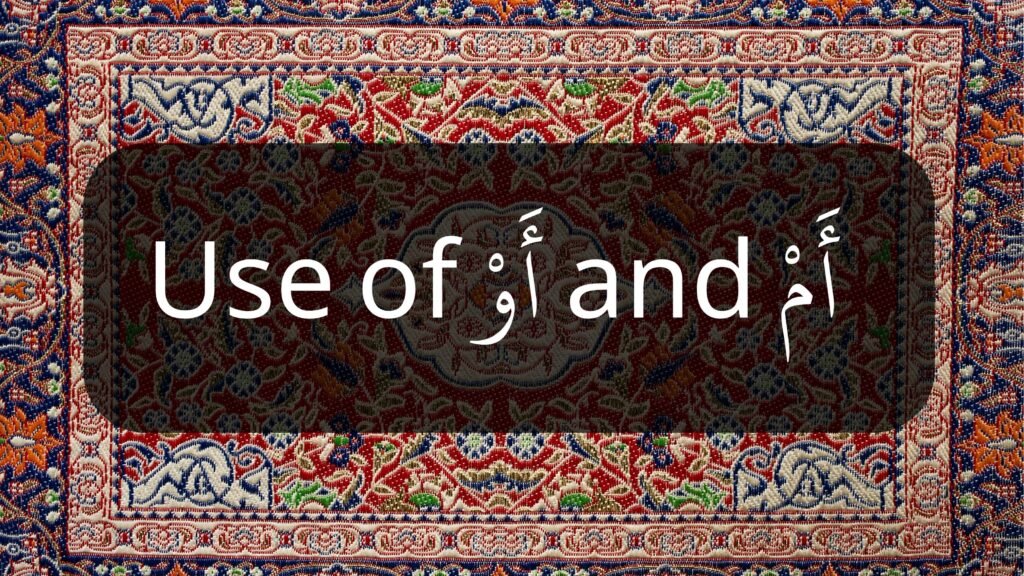
أَوْ / أَمْ (aw / am)
Both أَوْ and أَمْ mean “or” in Arabic.
However, there’s a difference in how they are used:
• أَوْ is used in statements.
• أَمْ is usually used in questions.
Examples:
سَنَشْرَبُ عَصِيرًا أَوْ قَهْوَةً.
We’ll drink juice or coffee.
تَكْتُبُ بِالفَحْمِ أَمْ تَرْسُمُ بِهِ؟
Do you write with charcoal, or do you draw with it?
سَنَشْرَبُ عَصِيرًا أَوْ قَهْوَةً أَوْ لَبَنًا.
We’ll drink juice, coffee, or milk.
Note: In English, the word “or” comes only before the last item in a list. The earlier items are separated by commas.
“Or not” in Arabic
When saying “or not”, Arabic usually uses أَمْ with the negative particle لَا. While you may sometimes find أَوْ used like this, أَمْ is more common.
Example:
هَلْ شَاهَدْتَهُ أَمْ لَا؟
Did you see him, or not?
Note: In English, we add a comma before “or not”.
See also: Correlative Particles (for more complex “either/or” structures).
